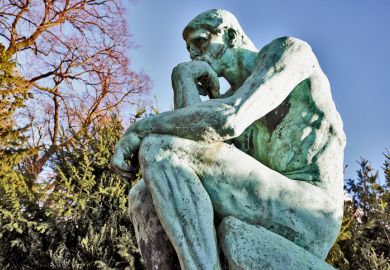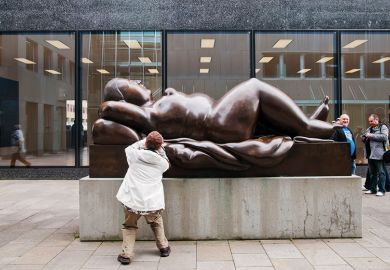Modern science has been astonishingly successful in predicting and explaining phenomena. For many, this is just the natural outcome of the fact that scientific theories are true: the world is the way it is described to be by our best theories. How could we believe otherwise in the age of the Human Genome Project? Yet this idyllic view of science is, to say the least, optimistic. Sceptics point out lots of facts that might undercut if not altogether doom this optimism. Is it not the case that so many past theories, once predictively and explanatorily successful, are now considered false and are consigned to history books? Shall we talk about Newton's grand theory, or the phlogiston theory of combustion? And is it not the case that phenomena are typically explained by two or more rival theories, without any observation or experiment being able to tell them apart? Don't theories employ so many idealisations, approximations and the like that make them literally false, anyway? And how could we be sure that all these exotic unobservable entities posited by scientific theories exist? In any case, would it not be safer to treat theories as useful instruments or else to commit ourselves only to their being empirically adequate?
Scientific realists are those philosophers (or scientists, for that matter) who defend science's claim to truth. But how do they substantiate their image of science in the face of the sceptical onslaught? Over the past ten years there have been a lot of fine books by scientific realists who take on each and every one of the sceptical challenges and try to neutralise them.
There have been three main lines of argument. First, the best explanation of the tremendous empirical successes of scientific theories, and especially of their ability to yield novel predictions (such as Einstein's prediction of the bending of light rays near massive bodies), is that these theories are true (or near true). Second, despite the sometimes radical change of theories as science grows, there has been a lot of substantive theoretical continuity in the history of science to warrant the conclusion that science is "on the right track". Third, scientific theories may be literally false (if only because they involve approximations and idealisations), yet they can be truth-like or approximately true. In particular, newer theories are more truth-like than old ones. The main conclusion of these arguments is that we can be confident that science delivers truth-like theories (or theories with many truth-like constituents, I would say). The scientific realism that has emerged in the past decade is brazen, yet more local in its scope than it was before and more realistic in its aspirations.
Critical Scientific Realism is another fine book that defends the realist cause. It places this defence squarely within the fallibilist tradition in epistemology, which dissociates knowledge from certainty. Ilkka Niiniluoto rightly dismisses the "all-or-nothing fallacy" of Cartesian epistemology, viz that either knowledge is certain or there is no knowledge at all. Yet, he does not give naturalism the attention it deserves: the main alternative theory, by now rival to Cartesian epistemology. For many realists (but not for him) realism can only be developed within a thoroughly naturalistic framework. The book is a rather technical philosophical treatise that might tire the uninitiated, but patience will be amply rewarded. In a certain sense, it is a compendium of the debates in several areas in which the realist concerns are involved. Do we, for instance, have to accept that there are genuine moral principles? Is reality constructed out of negotiations in the laboratory? Can we meaningfully talk of a world existing independently of the mind? But Niiniluoto is at his best when it comes to the concept of truth-likeness. This bothersome concept has led many philosophers to doubt that it can be properly explicated and formalised.
Niiniluoto's main equation, "truth-likeness=truth+similarity", is developed in some technical detail in the book, but one may wonder whether the concept of truth-likeness has to be formalised in order to be intelligible and applicable. In any case, it is hard to see how we can develop a natural similarity measure to pin down formally the concept of truth-likeness. Niiniluoto also rightly de-mystifies idealisation by showing how de-idealisation (or "concretisation") is "a method for approaching nearer to the truth".
Yet, the metaphysical picture that Niiniluoto endorses is unsettling. The world according to him is a flux of "tropes" ("spatio-temporally located property-instances"). A mosaic of qualities, such as the mass-of-Niiniluoto, the blondness-of-the-beard-of-Niiniluoto etc, Niiniluoto being a "bundle" of such co-occurring tropes. This is hard to defend without a lot of argument, but things get more puzzling since he notes that what we call properties (eg, the property of being brown) are not in the world, but rather are human-made constructions out of similar "tropes", created by "abstraction". This picture might give him the freedom to carve up the world in many different sets of properties and to safeguard his "ontological pluralism". But then it is hard to see how objective knowledge of the world becomes possible. This is crucial. Critical Scientific Realism declares that "it is possible to approach the truth, and to make rational assessments of cognitive progress". Does not then "ontological pluralism" stand in the way of objectivity?
Stathis Psillos teaches philosophy of science at the University of Athens.
Critical Scientific Realism
Author - Ilkka Niiniluoto
ISBN - 0 19 823833 9
Publisher - Oxford University Press
Price - £40.00
Pages - 341
Register to continue
Why register?
- Registration is free and only takes a moment
- Once registered, you can read 3 articles a month
- Sign up for our newsletter
Subscribe
Or subscribe for unlimited access to:
- Unlimited access to news, views, insights & reviews
- Digital editions
- Digital access to THE’s university and college rankings analysis
Already registered or a current subscriber? Login



